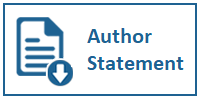BOARD OF DIRECTORS, CEO EXPERIENCE, CEO TENURE IN THREE REAL EARNINGS MANAGEMENT MEASUREMENT APPROACHES
DOI:
https://doi.org/10.31937/akuntansi.v14i2.2710Abstract
Abstract” This study aims to examine several factors that are thought to influence real earnings management. Board of directors size, CEO experience, CEO tenure, company age and profitability on real earnings management. This study grouped real earnings management proxies into three test models, abnormal production and abnormal discretionary expenditure (REM1); abnormal operating cash flow and abnormal discretionary expenditure (REM2); abnormal operating cash flows, abnormal production and abnormal discretionary expenditure (REM3). The three categories of real earnings management are intended to assess the robustness of the test results. The sample of this research is manufacturing companies listed on the Indonesia Stock Exchange during the period 2018-2020. Fifty-eight manufacturing companies meet the sampling criteria so the total sample data obtained is 174. The data of this study were analyzed using random effect panel data. This study's results indicate that profitability negatively affects real earnings management in all real earnings management testing categories. Board of directors, CEO experience, CEO tenure, and company age do not affect real earnings management. The research implies developing knowledge about the factors that influence real earnings management. This study provides empirical evidence that the company's ability to generate high profits can reduce the impetus of company management to perform real earnings management. The findings of this study have implications for investors as a consideration in making decisions that the company's ability to generate profits is a positive indication that the company has good prospects in the future and can reduce the impetus for real earnings management.
Keywords: Board of Directors; CEO Experience; CEO Tenure; Profitability; Real Earnings Management
Downloads
Downloads
Published
How to Cite
Issue
Section
License
Authors retain copyright and grant the journal right of first publication with the work simultaneously licensed under a Creative Commons Attribution-ShareAlike International License (CC-BY-SA 4.0) that allows others to share the work with an acknowledgement of the work's authorship and initial publication in this journal.
Authors are able to enter into separate, additional contractual arrangements for the non-exclusive distribution of the journal's published version of the work (e.g., post it to an institutional repository or publish it in a book), with an acknowledgement of its initial publication in this journal.
















